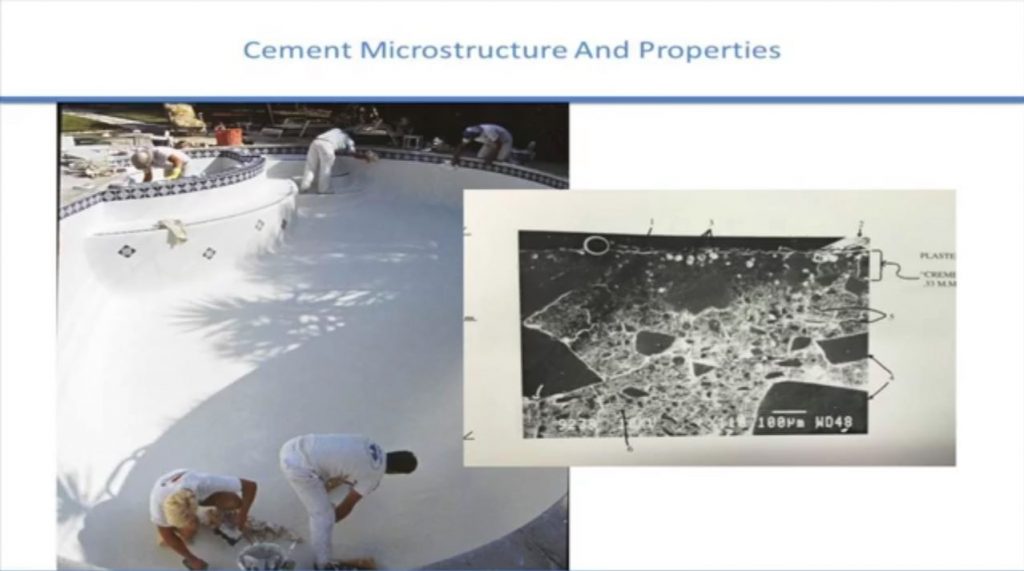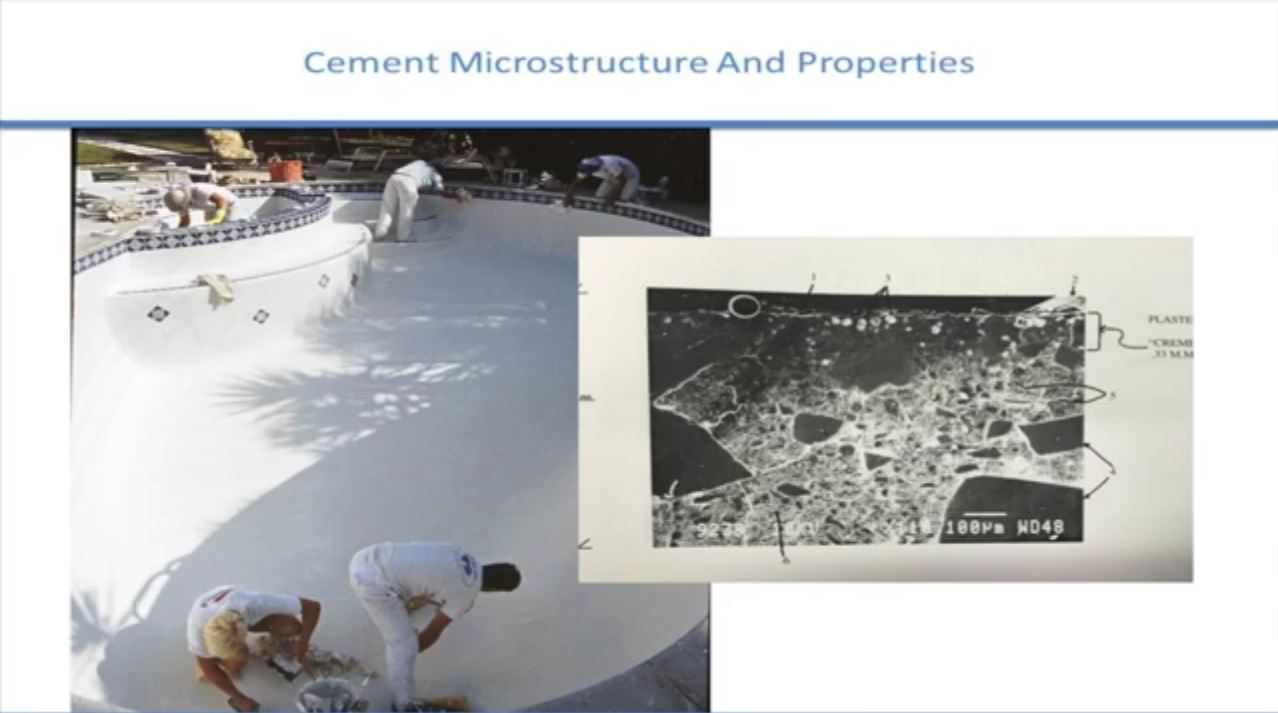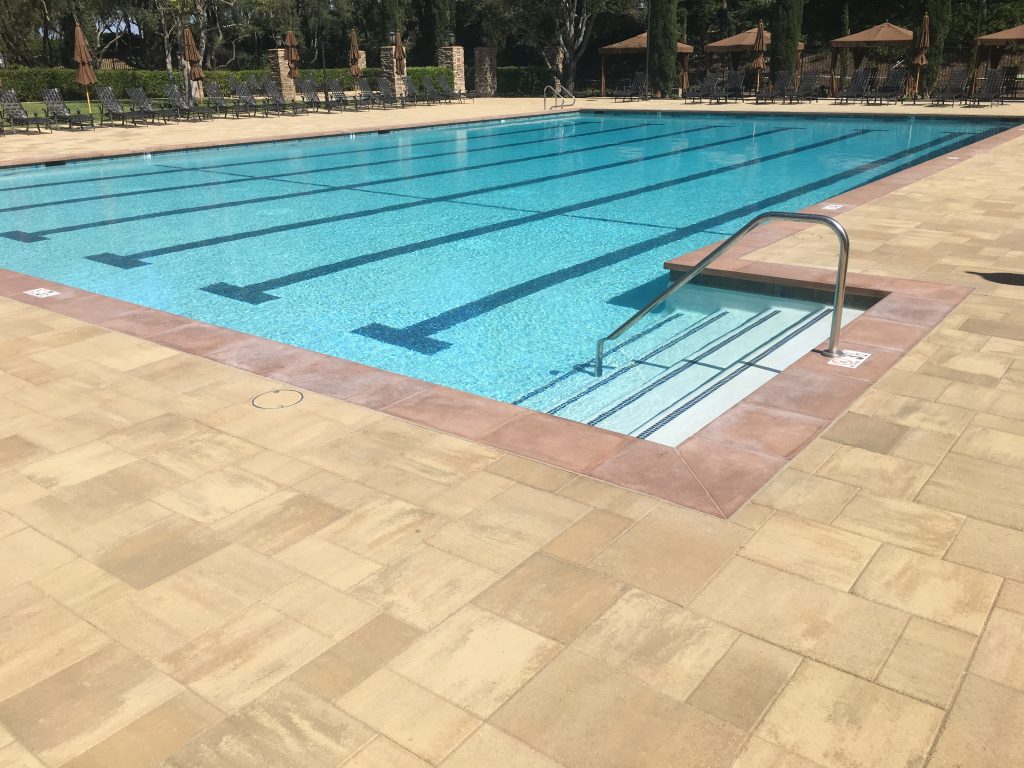What Are We Seeing Happen?
Now that you know what plaster is, we can start to understand etching a little bit better. Remember, when we talk about etching, we are specifically referring to the white splotches that often occur in pool plaster. Let’s take a minute now to understand what you are actually seeing.
Calcium Hydroxide
Calcium Hydroxide was a big player in the last segment, and it’s an even bigger one here. In case it isn’t completely obvious, calcium hydroxide dissolving into the pool water is primarily what causes the spot etching. More specifically, as the water starts to dissolve the calcium hydroxide, there is a chemical attraction that will cause even more of it to migrate to the surface of the plaster. The concentrated calcium hydroxide is what creates the white patterns or splotches. So how does the water get to the calcium hydroxide in the first place? Shouldn’t the plaster be water proof? Understanding that will require us to examine the surface structure of the plaster itself.
Surface Structure
No matter how professionally your plaster is lain, or how smooth it looks, on a microscopic scale, the finish is anything but. It may seem weird to think about such tiny interactions, but spot etching is a result of natural chemistry, and that always happens on these small scales. Basically, the outer surface of the pool plaster is full of bumps, ridges and all other kinds of texture. Some of that texture, no matter how well designed the plaster is, will include microscopic gaps. We typically refer to this as porous structure, and it is where the water finds places to interact with calcium hydroxide in the first place.
ITZ
The ITZ (interfacial transition zone) is what we call any region of plaster that touches something else. There is an ITZ between plaster and tile, and between the plaster and the pool. More complicated pool designs can have additional ITZs, but you get the idea. Keeping the microscopic ideas in mind from before, ITZs are a mix of the hard aggregate that makes the plaster what it is and the calcium hydroxide that is inevitably produced when using plaster. The calcium hydroxide actually fills the gaps in the plaster, helping to hold it together. Unfortunately, the ITZs are the uneven surface structures that make the plaster vulnerable to water in the first place. That means that the entire surface of the pool is an effective ITZ that can be affected by etching. Does that mean all hope is lost and your pool is doomed? Not quite.
Spot Etching and Pool Owners – What’s next?
If you remember the overview, etching occurs in up to 80 percent of all pools, but that number is noticeably less than 100 percent. We’ll go into more details on the mechanics of the etching process, underlying causes and reliable solutions in the next two installments, but the comforting takeaway at this juncture is this: microscopic etching alone will create microscopic etching patterns. The major etching that concerns most pool owners requires some collaborating factors. Check the next segment to see all about the leading theories behind etching and the research that we supported to find the real answers.
Pool Plastering with the Pros: Spot Etching #2 – What’s Happening? | Alan Smith Pools








